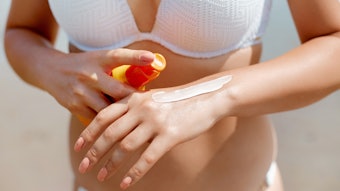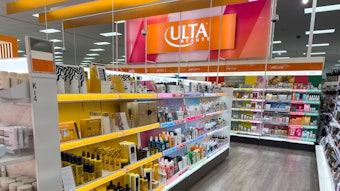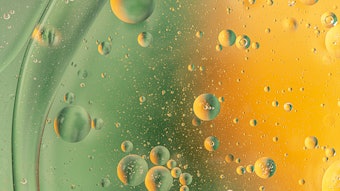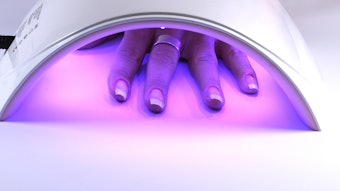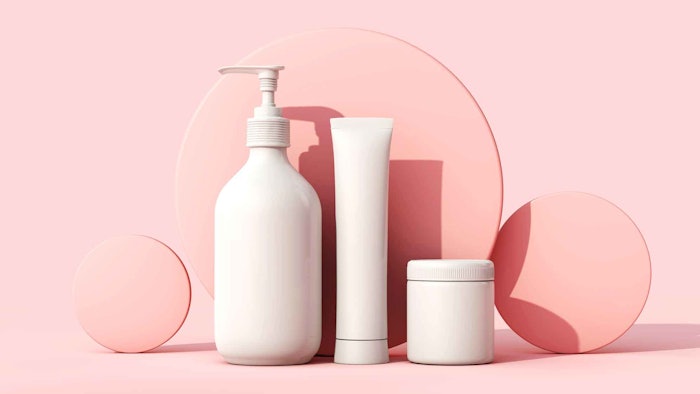
According to Chemical Watch, from November 2022 through February 2023, organizations in seven European Union (EU) member states tested 121 products and found bisphenols "of high concern" in 47 of them (39%). While the tests were carried out in textile, leather and plastic products, NGOs are urging the European Commission (EC) to impose stricter regulation on all bisphenols.
This underscores the larger public concern over potential endocrine-disrupting substances, some of which are used in cosmetics and personal care. The Scientific Committee on Consumer Safety (SCCS) recently issued opinions on some of these, described below.
See archived: Detecting Estrogenic Endocrine Disruptors in Personal Care Products and Supplements
Bisphenol Bans and Limits
Chemical Watch recently reported that bisphenols were detected in items used by babies and children. The use of bisphenol A (BPA), in particular, has been banned in infant feeding bottles across the EU since June 2011, per the European Chemicals Agency (ECHA), and in plastic bottles and packaging containing food for babies and children under three years since September 2018. It has also been banned as a cosmetic ingredient, although permitted as a coating in packaging materials.
BPA is also permitted in food contact materials in the EU. However, only a limited amount (0.05 mg/kg) is allowed to leach from the material into food. There is also a limit on the amount of BPA allowed to leach out of toys for children up to the age of three, and in any toys that are intended to be placed in a child’s mouth (up to 0.04 mg/L of BPA).
See archived: EU Regulatory Update; Greenwashing, Endocrine Disruptors and PFAS
Stine Müller from the Danish Consumer Council’s THINK Chemicals initiative, which spearheaded the 121-product study, explained that bisphenols A, B and S are on the European Union candidate list due to their endocrine-disrupting properties. However, substances such as bisphenol F and AF are not included, "even though they are also endocrine disrupting," Müller stated, adding that these tests show there is a need for further tightening of the legislation.
These findings follow a report on June 6, 2023, by The London Economic, titled "UK No Longer Following EU Guidelines on Cutting Safe Levels of BPA Plastic Containers." Per the article, The UK has "turned its back on EU guidelines regarding the safe level of bisphenol A in plastic containers." According to the source, the chemical has been linked to low sperm counts, infertility, and breast and prostate cancer, and was ruled to be 20,000 times too high by EU officials after reviewing 800 new studies.
Also, in April 2023, the European Food Safety Authority published a re-evaluation of the risks to public health related to BPA in foodstuffs. The results raised new alarm among regulators and have prompted discussions for further action.
Bisphenol Concerns
Per the European Chemicals Agency (ECHA), bisphenols are a large family of substances that have similar chemical structures and uses. Some of the most well-known are BPA and bisphenol S (BPS).
To avoid situations where one hazardous bisphenol is replaced with another that may be equally harmful, the ECHA and EU member states previously assessed 148 bisphenols as a group. They found that 34 bisphenols may interfere with hormonal systems and affect reproduction, so either their identification as substances of very high concern (SVHCs) or harmonized classification and labeling was proposed as a first step to manage their risks. The agency noted this number may change as more information is generated.
There were also 26 bisphenols not suspected to be endocrine disruptors or toxic to reproduction but per the ECHA, most of them are skin sensitizers and more data is needed before their potential for endocrine-disrupting and reprotoxic properties can be assessed.
Cosmetic Implications, SCCS Opinions
While BPA is not permitted as a cosmetic ingredient, as stated, it may be present in packaging. So as regulators review the results of the April 2023 foodstuffs report, this could impact permitted exposure levels, potentially making leaching a bigger concern.
The bigger impact, however, is that concerns over the potential endocrine-disrupting effects of bisphenols will no doubt put other cosmetic ingredients with the same alleged effects front and center (again), drawing interest from regulators. Examples of these ingredients include butylparaben, methylparaben, ethylhexyl methoxycinnamate (EHMC)/octylmethoxycinnamate (OMC)/octinoxate, benzophenones 1 through 5, BHA/butylated hydroxyanisole/tert-butylhydroxyanisole, triphenyl phosphate and salicylic acid, among others.
The EU's Scientific Committee on Consumer Safety (SCCS) recently (May/June 2023) issued preliminary opinions about the endocrine-disrupting potential of some of these materials, including:
Methylparaben: Safe when used as a preservative in cosmetic products up to a maximum concentration of 0.4% (as acid) when used on its own and up to 0.8% (as acid) for mixtures of esters as indicated in entry 12 of Annex V to the Cosmetics Regulation.
Butylparaben: Safe when used as a preservative in cosmetic products at concentrations of up to 0.14% (expressed as acid). However, in the absence of solid exposure data for children to butylparaben in cosmetic products, potential safety concerns have been noted by the SCCS.
4-Methylbenzylidene camphor (4-MBC): Cannot conclude on the safety of 4-MBC because the information provided is insufficient to fully evaluate potential genotoxicity. Moreover, there is sufficient evidence that 4-MBC may act as an endocrine disruptor and has effects on both the thyroid and estrogen systems. Effects on the androgen system are not so evident, as only in vitro evidence is available.
Even if the genotoxic potential was excluded, the current re-evaluation of 4-MBC established a higher exposure level than in the previous opinion. This would result in a lower MoS value, indicating that the use of 4-MBC at the maximum concentration of 4% in cosmetic ingredients would not be safe.
Salicylic acid: (CAS 69-72-7) is safe when used as preservative at a concentration of 0.5% in cosmetic products, considering its current restrictions in place. The provided information shows that salicylic acid is an eye irritant with the potential to cause serious damage to the eye. This opinion is not applicable to any sprayable product (including mouth spray) that may lead to exposure of end-user’s lungs by inhalation.
In 2022, the SCCS also issued preliminary opinions on the endocrine disruption potential of two other cosmetic ingredients:
Genistein and daidzein: Based on the available relevant data on the aglycone form of genistein and daidzein, and in consideration of the potential endocrine disrupting properties of phytoestrogens, the SCCS considers that: a) the use of genistein (CAS No. 446-72-0, EC No. 207-174-9) in cosmetic products up to a maximum concentration of 0.007% is safe; and b) the use of daidzein (CAS No. 486-66-8, EC No. 207-635-4) in cosmetic products up to a maximum concentration of 0.02% is safe.
Kojic acid: Safe when used as a skin lightening agent in cosmetic products at concentrations of up to 1%; notably, as kojic acid is sometimes added to peeling agents, a weakened skin barrier may be of additional concern because of greater dermal absorption. Only the topical use of kojic acid in cosmetics has been considered in this opinion. Other uses (e.g., food) of natural or synthetic sources have not been considered. As far as the derivatives of kojic acid are concerned, e.g., esters such as kojic acid dipalmitate and kojic acid isopalmitate, and derivatives such as chloro-kojic acid, these have not been included in this opinion as no data has been submitted.
Regulators and the industry have been on high alert over the endocrine-disrupting potential of cosmetic ingredients for some time now. Considering these recent reviews and studies, however, the winds of change are are likely just around the corner.
